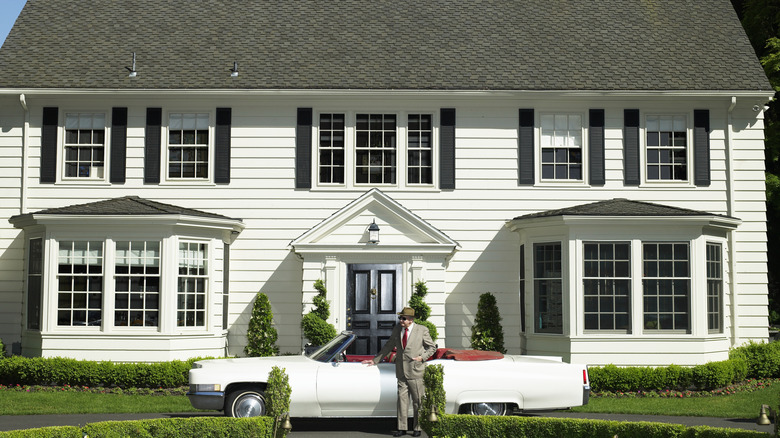When Your Credit Score Reaches This Number, You Can Qualify For A Conventional Refinance Loan
When defining conventional home loans, it may be easier to contrast them — meaning, against FHA, VA, and USDA loans. With the latter three types, an applicant would go to an approved bank or other lender to apply. Upon approval, the government would then provide mortgage insurance that protects the lender if the homebuyer didn't make their payments.
Conventional loans, meanwhile, are also provided by banks and other financial institutions, but they aren't insured by the government upon approval. Instead, any insurance covering the lender comes from private mortgage insurance companies. Since conventional loans don't come with governmental insurance backing, lenders may require a higher credit score from the applicant before approving their loan. This is true when it's a home purchase or a refinance. Each private lender can independently decide what credit score they'll need to see, with the highest possible FICO credit score being 850. Bankrate shares a commonly required minimum of 620 for conventional refinances.
Alongside the credit score, lenders generally want the borrower to have a debt-to-income ratio of 36% or less. The simplest way to determine a debt-to-income ratio involves adding up monthly debt payments (mortgage/rent, car, credit card, student loan, and so forth) and dividing them by your gross (pre-tax) income. If the result is .36 or lower, then that fits within the parameter being described. With a higher debt-to-income ratio, the lender may approve a conventional refinance at a higher interest rate or require a higher credit score.
Conventional refinance loans: other borrower considerations
People often refinance to get a better interest rate and a lower payment. Other times, the borrowers want to cash out their equity to use funds for other purposes: from home repairs to medical bills to a dream wedding. Bankrate also listed that an average credit score of 620 is needed for a cash-out conventional refinance; however, a higher score may allow you to borrow more or at a lower rate.
How does a conventional refinance work? Let's say the home's value is $250,000 with a current mortgage of $150,000. If the lender loans out 80% of the value, that's $200,000. If that's what someone borrowed, the first $150,000 would pay off the current mortgage, and closing costs would also need to be covered. Then, the remaining amount could be cashed out with the homeowner now making payments on the refinanced amount: $200,000. The lender may give a check directly to the borrower or pay off expenses for them out of refinance proceeds.
Typically, with a conventional refinance, banks will only lend 80% of a home's value, and, because 20% equity would exist in the home, private mortgage insurance wouldn't be required. Occasionally, though, lenders may loan out more than 80%, and this loan would require private mortgage insurance, which can really cost you. Be aware that this doesn't account for the property taxes, homeowners' insurance, and other amounts added to the principal and interest each month.

